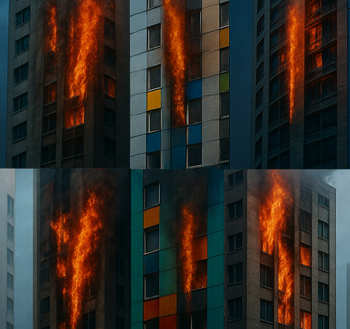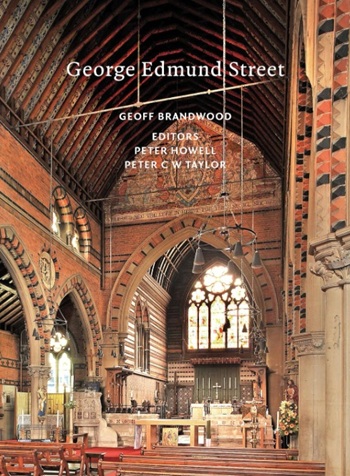Solid wall
Solid wall (sometimes a called a massive wall) refers to a construction of a single primary material in one layer, or different layered materials that make up a solid wall thickness. As opposed to a cavity wall which is built in layers with at least a central gap filled with air or an air entrained insulation material, to improve weathering resistance or thermal performance.
Solid wall construction might be described as the simplest type of wall construction, although some layered solid wall constructions may also be relatively complex in their own way. It is usually most common on historic buildings, or agricultural or out buildings that do not have thermal performance requirements.
The most common forms were made with natural stone, as well as processed blocks or fired bricks. In general single skin brick walls have bricks laying side by side, whilst thicker two skin walls are intermingled with header bricks used as ties, though these may or may not contain a cavity.
Other construction methods, often found on very early vernacular buildings that are made up of a single consistent layer throughout their thickness are cob, adobe, rammed earth as well as straw (bale), reed and grass, these may also referred to as solid construction.
In 2015 the UK Government reported that of the 26 million existing homes in the United Kingdom, over 8 million had solid walls or around 30%, in 2020 the UK Governments "Household Energy Efficiency detailed release" reported that 9% of all properties with solid walls were insulated.
[edit] Related articles on Designing Buildings
- Accredited construction details ACDs.
- Barrier wall system.
- Brick.
- Bricklayer.
- Building damp-free cavity walls.
- Bullseye window.
- Cavity wall insulation.
- Cavity tray.
- Cold bridge.
- Coping and capping
- Crosswall construction.
- Damp proof course.
- Defects in brickwork.
- Defects in stonework.
- Dew point.
- How to lay bricks.
- Insulation.
- Interstitial condensation.
- Masonry.
- Parapet.
- Pistol brick.
- Preventing wall collapse.
- Rainscreen.
- Solid walls to cavity walls, a brief history.
- Solid wall insulation.
- The cavity wall real performance question.
- Treating brickwork with sealant or water repellent.
- Types of brick.
- Types of brick bonding.
- Vapour barrier.
- Wall plate.
- Wall ties.
- Wall tie failure.
- Wall types.
Featured articles and news
Government consultations for the summer of 2025
A year of Labour, past and present consultations on the environment, the built environment, training and tax.
CMA competitiveness probe of major housing developers
100 million affordable housing contributions committed with further consultation published.
Homes England supports Greencore Homes
42 new build affordable sustainable homes in Oxfordshire.
Zero carbon social housing: unlocking brownfield potential
Seven ZEDpod strategies for brownfield housing success.
CIOB report; a blueprint for SDGs and the built environment
Pairing the Sustainable Development Goals with projects.
Types, tests, standards and fires relating to external cladding
Brief descriptions with an extensive list of fires for review.
Latest Build UK Building Safety Regime explainer published
Key elements in one short, now updated document.
UKGBC launch the UK Climate Resilience Roadmap
First guidance of its kind on direct climate impacts for the built environment and how it can adapt.
CLC Health, Safety and Wellbeing Strategy 2025
Launched by the Minister for Industry to look at fatalities on site, improving mental health and other issues.
One of the most impressive Victorian architects. Book review.
Common Assessment Standard now with building safety
New CAS update now includes mandatory building safety questions.
RTPI leader to become new CIOB Chief Executive Officer
Dr Victoria Hills MRTPI, FICE to take over after Caroline Gumble’s departure.
Social and affordable housing, a long term plan for delivery
The “Delivering a Decade of Renewal for Social and Affordable Housing” strategy sets out future path.
A change to adoptive architecture
Effects of global weather warming on architectural detailing, material choice and human interaction.
The proposed publicly owned and backed subsidiary of Homes England, to facilitate new homes.
How big is the problem and what can we do to mitigate the effects?
Overheating guidance and tools for building designers
A number of cool guides to help with the heat.
The UK's Modern Industrial Strategy: A 10 year plan
Previous consultation criticism, current key elements and general support with some persisting reservations.
Building Safety Regulator reforms
New roles, new staff and a new fast track service pave the way for a single construction regulator.
























